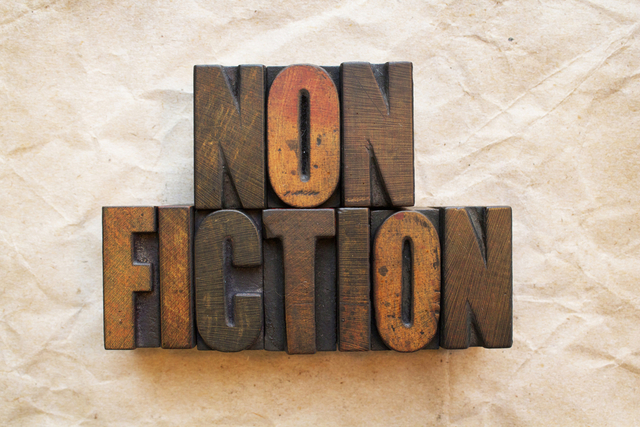
You probably have knowledge and experience that the world wants to hear about. Why not join the financially rewarding path of non-fiction book publishing?
Self-help literature, in particular, can offer a consistent stream of income for writers. Plus, a non-fiction book can lead to other income opportunities like motivational speaking, coaching, and consulting work.
Excellent non-fiction guides are equal parts knowledge, inspiration, and entertainment.
You are probably eager to get writing, but organizing and structuring your book first will help you create a readable book that will inspire others and bring you success. You need a structure to make sure readers get your message.
Here’s how to organize your knowledge to make it accessible, informative, and entertaining to your readers.
Your Book’s Promise
Before you start writing, decide on the focus of your book. What will your reader gain from reading your book? That’s your promise to the reader, the reason they will buy and read your book.
If your book is about parenting, is it for single or married parents? Male or female? Brainstorm ideas for what you promise your reader and who that reader is.
What results will the reader have after reading? Drill down to specifics. Is your book for single dads? Busy moms with several children?
Your promise determines the structure of your book. Once you isolate your promise to the reader, you can build the parts of your book. Each part leads your reader to the solution you promise.
The 7 Structural Steps
Order your book parts so they lead your reader from the idea behind your information to the steps to lead them through achieving their goal – your promise.
1. Table of Contents
The table of contents is like an outline for your reader. No matter how much you strive to make your book flow from one point to another, not everyone will read the entire book, nor will they read what you’ve written in order.
Creating a table of contents gives your reader a sense of the book’s logic and makes every chapter accessible on its own.
In a paperback, your table of contents allows your reader to flick to the chapter they want to read next. In an eBook, you can make each heading clickable so that readers can navigate easily between chapters.
Having a strong table of contents which tells readers exactly what they’ll find in each chapter turns your book into a resource that they can use time and time again.
2. Introduction
Your introduction is a high-level view of the book. Introduce your topic and address the reader’s motive. Normally, the reader has a particular problem they want to fix or an opportunity they want to explore.
The introduction isn’t necessarily about you, it’s about your reader. Address their issue first and then introduce yourself and explain why you are uniquely qualified to help the reader.
Once you’ve assured the reader you can answer their question or help them gain a new skill, round off with an overview of what they will learn in the coming pages.
Depending on your topic promise and your style, the introduction can range in length from one page to 30 pages. The length doesn’t matter. Take only as long as you need to give your high-level view.
3. Glossary
A glossary of terms is optional, but will always be helpful if your book is teaching a skill or discipline like medicine, economics, or publishing. You may understand the terms and acronyms of your field, but your reader may not.
List each term with a short, single-paragraph definition or explanation. Your glossary will be of particular help to a general reader who is entering your area of expertise.

4. Outcome Benefits
Energize your reader by showing them what they will achieve. Use a success story example of what will happen if they implement your lessons.
A well-behaved dog, a successful cross-country ski trek, doubled income – paint a picture in their mind of what they can do and how they will feel after reading your book.
Your words will inspire your reader to keep reading by adding texture and clarity to their outcome. They will want to put your lessons into action to create their own success story. Success stories lead to better reviews on your book and more opportunities for you.
5. Mindset Principles
Explain the attitude and motivation your reader will need to reach success. Readers who don’t master the right mindset will probably fail at the lessons that follow.
They may not know to tackle the hardest thing first, or how to achieve the awareness and mindfulness needed to make decisions.
To absorb your practical lessons, your reader needs to understand how attitude affects outcome. Understanding mindset principles is key to working through self-help books on any subject.
6. The Body of Your Non-Fiction
Once you’ve led your reader through the logic, the dream of accomplishment, and the mental attitude necessary for success, walk them through the steps and practical tips they need to find the solution that motivated them to buy your book.
Be specific, outlining exact strategies they can take action on immediately. While you want to start chapters at a high level, sub-chapters should be full of granular advice and case studies showing how to use your advice in specific situations.
Don't include too much. Inform rather than overwhelm. Readers won't feel cheated by a shorter book so long as it teaches them what they want to know. Some of history’s most successful self-help guides are under 200 pages. Napoleon Hill’s classic Think and Grow Rich is a little over 200 pages.
On the other hand, don’t withhold vital information. Don’t save your best tips for something else. Readers want to be able to solve their problem now, not pay for a marketing pitch for a more expensive solution later.
The best self-help books tend to order the meat of their content in one of two different structures:
- Content grouped into themes
- Content structured in order of difficulty, from the fundamentals for newbies to advanced strategies for seasoned enthusiasts
Your content should always be logical and easy to navigate with clear steps that guide the readers to the information that they want. Beyond this, your structure should depend entirely on what will work best for your book.
Let’s work through some examples.
If your book is a memoir, you’ll want to make a point about what your life experiences have taught you. Your promise to your reader is to impart the conclusions you reached, and to tell them how they can benefit from your new understanding and philosophy of life.
Memoirs work best by grouping the content into themes. Select highlights from your life that illustrate your themes well. Readers don’t want to read your entire life story, only the bits that will help them.
If you’re focussing on a practical task, like learning a new skill, or are writing to address a specific set of problems, structure your chapters by the order of challenges. Start with beginner practices and build on each lesson.

7. Give Your Book Context
Readers who have read your book and liked your information will want more.
Once you’ve taught the reader all the information they wanted to learn when they picked up your book, set your lessons within a wider context. Follow up with suggestions for next steps and resources to expand their knowledge and build on their success.
For example, a book on growing a successful Instagram following can help people achieve growth, but your readers will want to know what to do next.
For example, they can leverage that following to solidify their place as an influencer on other platforms, or look into speaking gigs to grow their audience beyond the online sphere.
Give your reader ways to contact you, like joining your mailing list for more tips. This is your opportunity to guide readers into your sales funnel for courses or coaching, retreats, or adventures.
Writing Your Book
As eager as you are to share your expertise, you’ll find that planning the structure will help you write faster. This may feel like you’re slowing the whole process down but, with a solid structure, you’ll know what to include in each section of your book.
With your outline as your guide, you’ll find you write faster. You won’t have to stop and think about what comes next.
How to Follow the 7 Step Structure
Fill out notes for each of the seven sections. Where you’ll start, what your reader will learn, and any action steps for your reader.
When you get to the body of your book, organize the chapters by theme or progressive steps. Make notes about the content of each chapter. Again, where you’ll start, what your reader learns, and action steps.
Your writing needs to be as clear and easy to follow as possible in a non-fiction book. When you already know all of the steps and processes you are writing about, it can be difficult to see when you need to make something clearer or explain it in a new way.
Get someone else to read over each chapter of your book to check that they understand your process. This will help you see where your book might be confusing or require further consideration.
Writing Style
It might seem counter-intuitive, but one of the best ways to prove yourself as an expert in your field and a valuable source of information is to make your writing as simple as possible.
Jargon and long complex sentences might make you feel advanced, but they’ll make your work more challenging for your reader to understand and engage with.
Rather than aiming for the most impressive sentences possible, you should aim to for easy readability. To give you a head start, why not use ProWritingAid?
Readability scores tell you how easy it is for someone to read your work. The ProWritingAid Readability Report looks at factors like sentence length, syllable density, and word familiarity to tell you what groups of readers will be able to access your text.

The higher the readability score, the more advanced your text is and the harder it is to comprehend. Why not run a chapter of your non-fiction book through ProWritingAid to see how you score?
Plan Your Way to Success
If you follow this structure when you write, your notes will guide you through writing each section to lead your reader to their personal success.
Your reader’s success is your success, so plan well.


